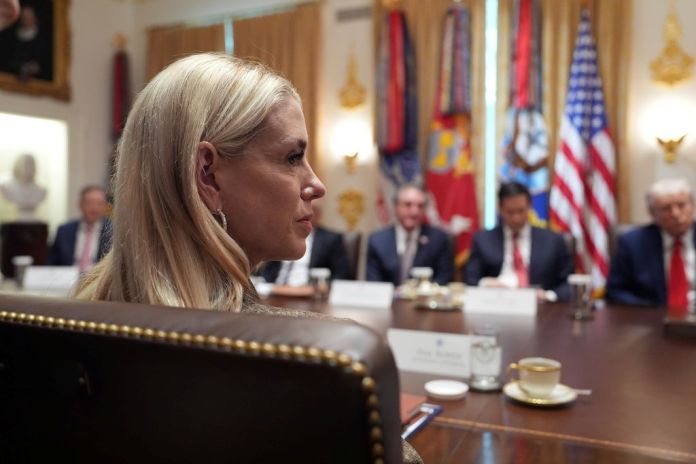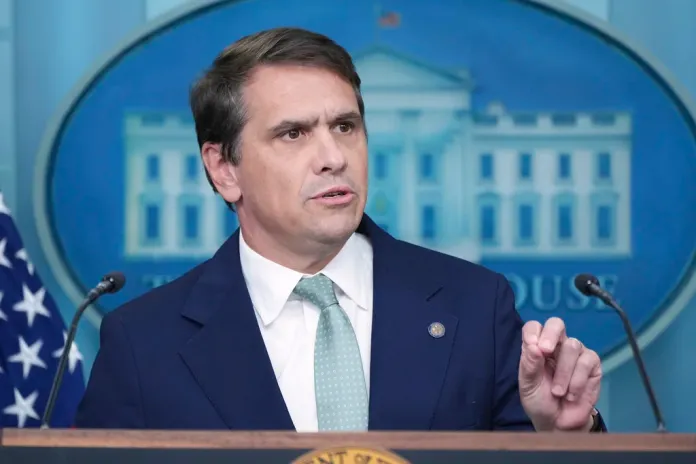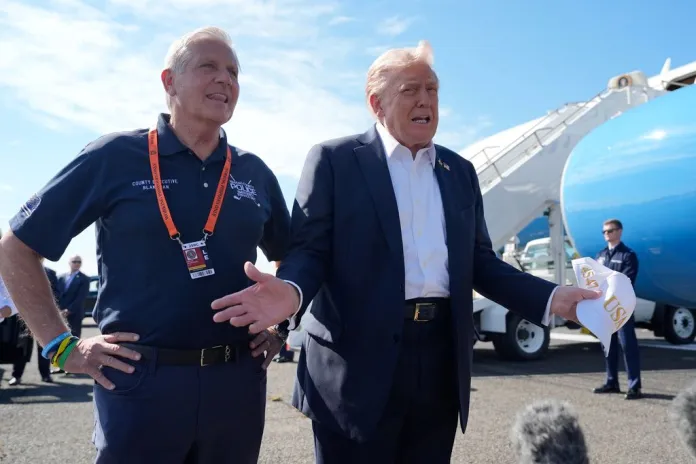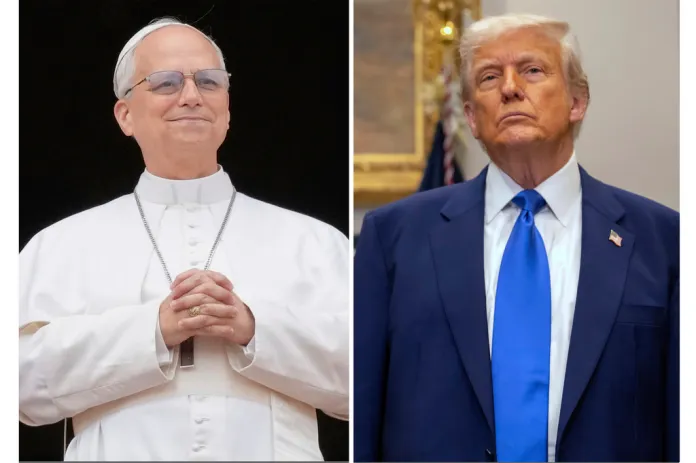Trump Gives SCOTUS Chance To Make Fed Agencies Accountable
Teh Trump management is actively reforming federal agencies by dismantling redundant programs and pursuing deregulation, aiming to reduce the influence of what it considers an unaccountable administrative state. This includes a particular focus on “independent agencies,” such as the National Labor Relations Board (NLRB), which operate wiht limited presidential oversight. The administration argues for greater presidential control over these agencies, countering established legal precedents that protect their autonomy. Key historical cases, such as *Myers v. U.S.* and *Humphrey’s Executor v. U.S.*, have shaped the debate over presidential removal powers and the authority of independent agencies. The current administration’s approach could lead to significant legal challenges regarding the balance of power between the presidency and these agencies, possibly revisiting landmark Supreme Court rulings. The outcome of such disputes may redefine the roles and powers of independent agencies in the U.S. goverment.
The Trump administration is restructuring agencies, axing asinine programs, and deregulating at breakneck pace in a bid to deconstruct an administrative state that has for generations operated as an unaccountable and arguably unconstitutional fourth branch of government. In its effort to jettison bureaucrats likely to resist the Trump agenda, the administration has struck at perhaps the administrative state’s most dubious manifestation — so-called “independent” agencies — with Trump’s firing of the board member who had been serving as acting head of the National Labor Relations Board (NLRB) poised to bring the confrontation to a head.
‘Independent’ Agencies Mean Insubordinate Agencies
Progressives birthed the administrative state pursuant to their view that government management was a science to be conducted by purportedly apolitical technocrats with specialized knowledge — the Constitution and its separation of powers be damned. Independent agencies can be seen as perhaps their ultimate Frankenstein’s monster.
Like other agencies, the Federal Communications Commission (FCC), Federal Trade Commission (FTC), and NLRB often exert outsize control over Americans’ lives and finances by issuing consequential rules and regulations.
But unlike their peers, these “independent” bureaucracies often make such decisions without presidential oversight or control. Further, while presidents appoint and senators confirm those who lead these bureaucracies, members or commissioners often serve staggered terms or terms outlasting any one administration. By law, the president’s power to dismiss agency leaders is circumscribed. The commander-in-chief may only fire them for cause — hence their “independence.”
President Trump has sought to wrangle these agencies by issuing an executive order to “ensure Presidential supervision and control of the entire executive branch.” It mandates that all agencies run their regulatory policies through the White House and subjects them to White House strictures on management, funding, and operations.
Still, ultimately, personnel is policy, and the courts have ruled that presidents may not fire independent agency leaders at will. Therefore, the president has lacked full control over personnel, and policy, within these institutions.
The Trump administration says it interprets the law differently and has vowed to overturn relevant Supreme Court precedent. Its firing of the former acting chair of the NLRB, which in turn recently prompted a lawsuit, may soon put that precedent to the test.
To understand the coming legal clash and its significance, some history is in order.
The Supreme Court Precedent Insulating the Administrative State
In 1926, the Supreme Court held in Myers v. U.S. that the power to remove appointed officers — in that case, a postmaster — is vested in the president and the president alone. Absent that power, a commander-in-chief could not “discharge his … constitutional duty of seeing that the laws be faithfully executed,” Chief Justice William Howard Taft wrote for the majority.
But a decade later, as the administrative state rapidly expanded during the throes of the New Deal, in Humphrey’s Executor v. U.S., the Supreme Court hemmed in the president’s removal power by upholding congressional restrictions on it.
The case involved Democrat President Franklin Delano Roosevelt’s attempt to replace Republican President Herbert Hoover-nominated FTC member William E. Humphrey with a pick of his own in the middle of the member’s term. FDR asked for Humphrey’s resignation on grounds of political differences. Humphrey resisted, leading the president to fire him. The recalcitrant FTC member perished shortly thereafter, but his executor sued to recover back pay on account of the alleged unlawful dismissal.
Humphrey’s executor, representing the late commissioner’s estate, argued that FDR could not fire him but for reasons of “inefficiency, neglect of duty, or malfeasance in office,” pursuant to the legislation establishing the FTC. The president, in short, could not fire commissioners at will.
The Supreme Court ruled in favor of the plaintiff, arguing these constraints on the president’s removal power were lawful by distinguishing between his “illimitable” or “unrestrictable” power to remove “purely executive officers” and his limited power to remove officers serving in “independent agencies” exercising purportedly “quasi-legislative” and/or “quasi-judicial powers.”
The Supreme Court would recognize only one other exception to the president’s removal power, with respect to tenure protections for “certain inferior officers with narrowly defined duties” in Morrison v. Olson.
In recent years, the Supreme Court has hacked away at administrative state power, including refusing to extend protections for independent agency officers from removal beyond the 1935 precedent.
In a 2020 case, Seila v. CFPB, the court ruled that on account of differences in the agency’s structure, partisan makeup, and functions relative to the multi-member, bipartisan FTC, a president could fire the Consumer Financial Protection Bureau’s director at will.
“While we do not revisit Humphrey’s Executor or any other precedent today,” Chief Justice John Roberts wrote for the majority, “we decline to elevate it into a freestanding invitation for Congress to impose additional restrictions on the President’s removal authority.”
In a concurrence, Justice Clarence Thomas, joined by Justice Neil Gorsuch, wrote that the court ought to go further and overturn Humphrey’s Executor — in effect threatening the foundations of “independent” agencies themselves.
The associate justice wrote that the decision violated Article II’s vesting clause by extending executive powers to those insulated from the executive, infringed upon his removal powers, and undermined the accountability core to the Constitution. In addition, Thomas said:
The Constitution does not permit the creation of officers exercising “quasi-legislative” and “quasi-judicial powers” in “quasi-legislative” and “quasi-judicial agencies.” No such powers or agencies exist. Congress lacks the authority to delegate its legislative power, and it cannot authorize the use of judicial power by officers acting outside of the bounds of Article III.
Thomas concluded that “[c]ontinued reliance on Humphrey’s Executor to justify the existence of independent agencies creates a serious, ongoing threat to our Government’s design. … Today, the Court does enough to resolve this case, but in the future, we should reconsider Humphrey’s Executor in toto.”
The future may now be here.
Restoring Executive Power Over the Executive Branch
Acting Solicitor General Sarah Harris recently sent a letter to Senate Judiciary Committee Ranking Member Dick Durbin, D-Ill., indicating that the Trump administration will not defend the constitutionality of “certain for-cause removal provisions that apply to members of multi-member regulatory commissions,” including the FTC, NLRB, and Consumer Product Safety Commission (CPSC). Harris also vowed that the Justice Department would “urge the Supreme Court to overrule” Humphrey’s Executor to the extent it conflicts with its position.
In a case pending before the Supreme Court regarding the challenged firing of the head of the Office of Special Counsel, the administration reiterated its position, and, as was noted earlier, Trump has fired the former acting chair of the NLRB, who has sued the administration over her firing.
Humphrey’s Executor appears to be headed on the fast track to the Supreme Court for reevaluation, and Justice Thomas may well get the chance to play Humphrey’s Executor‘s executioner.
With it, the Supreme Court may challenge the concept of independent agencies themselves.
Ben Weingarten is editor at large for RealClearInvestigations. He is a senior contributor to The Federalist, columnist at Newsweek, and a contributor to the New York Post and Epoch Times, among other publications. Subscribe to his newsletter at weingarten.substack.com, and follow him on Twitter: @bhweingarten.
" Conservative News Daily does not always share or support the views and opinions expressed here; they are just those of the writer."




